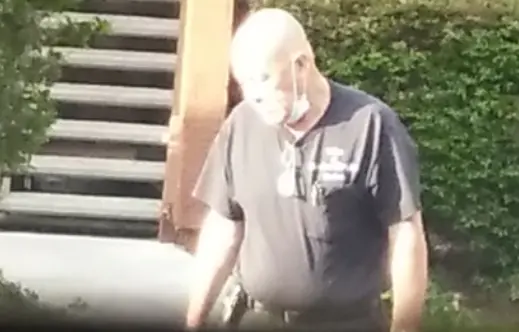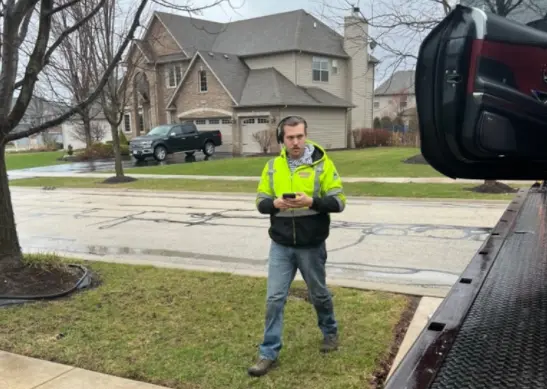Complaint Review: TapRealtyAz.com - Scottsdale Arizona
- TapRealtyAz.com 14362 N. Frank Lloyd Wright Blvd. Suite 1000 Scottsdale, Arizona USA
- Phone: 602.740.9866
- Web: TapRealtyAz.com
- Category: Realtors
TapRealtyAz.com - Steve Taplin - SteveTaplin.com - TapRealtyAz.com - NationalSEOexperts.com - SEORealEstateExperts.com - Diversified-Residential.com - RealtorSeoExperts.com - BuyHomeArizona.com - YourAzPropertySearch.com STOLE $3,000 - SCAMS - THIEF - SCAMMER - Steve Taplin - SteveTaplin.com - TapRealtyAz.com - NationalSEOexperts.com - SEORealEstateExperts.com - Diversified-Residential.com - RealtorSeoExperts.com - BuyHomeArizona.com - YourAzPropertySearch.com - SCAMMER - THIEF - SCAMS Scottsdale Arizona
*REBUTTAL Individual responds: Court Order / Judgement proving statements are ontrue
*REBUTTAL Individual responds: Carl Williams is a liar and scam artist
listed on other sites?
Those sites steal
Ripoff Report's
content.
We can get those
removed for you!
Find out more here.
Ripoff Report
willing to make a
commitment to
customer satisfaction
Click here now..
SCAMS - THIEF - SCAMMER - Steve Taplin - SteveTaplin.com - TapRealtyAz.com - NationalSEOexperts.com - SEORealEstateExperts.com - Diversified-Residential.com - RealtorSeoExperts.com - BuyHomeArizona.com - YourAzPropertySearch.com - SCAMMER - THIEF - SCAMS
STOLE A $3,000 EARNEST MONEY DEPOSIT FROM ME, AND IT'S NOT HIS FIRST TIME !
I met with Mr. Taplin, he even showed me properties that could get me financed as he explained it. It all seem reasonable to me, after showing me at least six homes I settled on the one that appeared to offer the most value, not the cheapest and not the most expensive either.
As Mr. Taplin explained it to me, the deal would be a "Lease Option", meaning that I would have the option to buy the home at the end of the deal, but until then the house would remain in his company name and I would make payments because my credit was not above a 650 score.
Once again this all seemed legit to me and I followed along in that Mr. Taplin appeared to be a experienced Realtor and this was my first time out ever even attemping to purchase a home, all I've ever done up until now is rent homes my entire life and I guess I got over-excited and let my guard down.
Upon asking me for the $3000 "Earnest Money Deposit", I simply gave it to him "CASH", this is what I mean by "Over-Excited" !, with high emotions of finnally having the first time opportunity of owning my own home, stupid me I did not even bother to ask for a freaking reciept for my cash, this was on a Friday. Mr. Taplin then instructed me to meet with him on the following Monday at his Scottsdale office.
Monday comes and I head out to his office, upon arrival, his secretary tells me that "Mr. Taplin has gone on vacation and will not return until 2-weeks", at first I thought well maybe he just got his wires cross and simply forgot about our appointment, so I waited the 2-weeks.
After 2-weeks and all of my calls to Mr. Taplin's cellular phone going straight to Voice Mail I once again set out to his office numerous of times over a period of 30-days to be told each time by his secretary "Mr. Taplin is out of the office showing clients prospective homes !", Now I'm just tried and fed up with this nonsense and have come here to ripoffreport.com for help.
I would like either one or the other, the return of my $3,000 cash, and or to be placed in the home that Mr. Taplin promised me on the Property Lease Option deal that we first agreed on, thus allowing me to finally live out the "American Dream", otherwised this has all been a "Pipe-Dream" and at the end of it all I'm out of $3000 dollars, money that I cannot affort to lose, it was all I had.
Then to add insult to injury, I got to searching in the internet to investigate Mr. Taplin and discovered that he had previously been barred from the State of California for selling Real Estate without a license, makes no sense to me, how did he manage to get an Arizona Real Estate License after being kicked out of California, are the computers not connected nationwide ?, your guess as good as mine !
Foolish Customer
BUYER BEWARE - DON'T TRUST THIS THIEF
BARED FROM THE STATE OF CALIFORNIA
For Selling Real Estate WithOUT a License !
www.dre.ca.gov/files/pdf/loanmods/H5500SAC.pdf
Steve Taplin
Founder and CEO
14362 N. Frank Lloyd Wright Blvd. Suite 1000
Scottsdale, AZ 85260
480.376.2054 Office
602.740.9866 Cell
480.666.5222 Fax
SteveT@SEORealEstateExperts.com
Diversified-Residential.com/Steve-Taplin
| Steve Taplin |
|
|
| Steve Taplin |
| Steve Taplin
t of Appeals of Georgia.THE STATE v. TAPLIN.A12A0067.Decided: April 12, 2012Steve Taplin was indicted for aggravated assault, possession of a firearm during the commission of a crime, cruelty to a child in the third degree and driving with a suspended license. The trial court granted Taplin's motion to suppress evidence of a gun found in his truck during a warrantless search incident to his arrest, and the state appeals. Because the uncontroverted evidence demonstrated, as a matter of law, that Taplin was arrested for the crime of aggravated assault, and because it was reasonable for an officer to believe that the truck contained evidence related to that crime, the warrantless search was permitted pursuant to Arizona v. Gant, 556 U.S. 332 (129 SC 1710, 173 LE2d 485) (2009). Accordingly, we reverse. On reviewing a trial court's ruling on a motion to suppress, evidence is construed most favorably to uphold the findings and judgment, and the trial court's findings on conflicting evidence will not be disturbed if there is any evidence to support them. Tate v. State, 264 Ga. 53, 54(1) (440 S.E.2d 646) (1994). But “where the evidence is uncontroverted and no question regarding the credibility of witnesses is presented, the trial court's application of the law to undisputed facts is subject to de novo appellate review.” (Citations omitted.) Vansant v. State, 264 Ga. 319, 320(1) (443 S.E.2d 474) (1994). The only evidence presented at the suppression hearing was the testimony of police officer Larry Sanford. He testified that around noon on November 29, 2009, he was dispatched to a domestic dispute with information that a person named Steve Taplin had pointed a firearm at his child's mother and then driven away from an apartment complex in a black pickup truck. One to two minutes later, as Officer Sanford was en route to the scene, he saw a black pickup truck leaving the vicinity of the apartment complex. He determined by checking the license tag that the pickup truck was registered to Steve Taplin. A dispatcher also informed him that Taplin's driver's license was suspended. Officer Sanford testified that, “based on the possibility of a firearm being in the vehicle,” he did not immediately initiate a traffic stop but, along with an officer in another vehicle, continued following the truck for another five to ten minutes. He then initiated what he described as a “felony traffic stop.” The two officers got out of their vehicles with their firearms drawn and asked Taplin to place his hands outside the truck's window. Taplin did not comply but instead “look[ed] around in the vehicle toward the center of the vehicle compartment.” A third officer arrived on the scene, and Officer Sanford ordered Taplin to step out of the truck and face away from him. Taplin did so, but repeatedly tried to look and reach inside the truck, telling the officers that he was looking for his identification. Ultimately, he complied with commands to walk backwards toward the officers, get on his knees on the ground, and cross his legs behind him. One of the officers approached him and placed him in handcuffs. Taplin then was taken to the rear of one of the police vehicles. The officers asked his name and determined that he was Steve Taplin. They also sought consent to search the truck but Taplin refused. At that point, one of the officers “cleared the rest of the vehicle, mak[ing] sure there [were] no other occupants inside the vehicle.” Officer Sanford then checked the area of the truck where he had noticed Taplin looking and found a firearm under the driver's seat cushion cover. In Arizona v. Gant, the Supreme Court of the United States held that “circumstances unique to the vehicle context justify a search incident to a lawful arrest when it is reasonable to believe evidence relevant to the crime of arrest might be found in the vehicle.” (Citation and punctuation omitted.) Gant, 552 U.S. at 343(III). In granting Taplin's motion to suppress, the trial court noted that Officer Sanford had not specifically identified the crime for which he had arrested Taplin. Thus, the court stated: Both sides make conclusions about what the arrest was for, with the State claiming it was for the Aggravated Assault and the Defendant contending it was for the suspended license. Without a clear record and with the law that it is the State's burden to show the legality of the search, the Court finds that the burden has not been met by the State. Consequently, the Court is unable to ascertain whether it was reasonable for the Officer to believe that evidence relevant to the specific crime of the arrest might be found in the vehicle. See generally State v. Massa, 273 Ga.App. 596, 597 (615 S.E.2d 652) (2005) (state bears the burden of showing circumstances constituting an exception to the general prohibition against warrantless searches and seizures). In light of the Supreme Court of Georgia's opinion in State v. Underwood, 283 Ga. 498 (661 S.E.2d 529) (2008), the trial court erred in granting the motion to suppress. The Supreme Court held in Underwood that, under the uncontroverted facts of that case, “[t]he coincidence of probable cause to arrest [a defendant] for a violation [of a particular statute] and [the defendant's] actual arrest meant that [the defendant] was, as a matter of law, arrested for [a violation of that] statute.” (Citations and punctuation omitted; emphasis supplied.) Id. at 501. Consequently, applying a de novo standard of review, the Supreme Court reversed this Court's ruling that the determination of the offense for which the defendant had been arrested was an issue of fact for the trial court to decide and that, construing the evidence to support the trial court's findings, that determination was not clearly erroneous. Id. at 500–501; see State v. Underwood, 285 Ga.App. 640, 642 (647 S.E.2d 338) (2007). As in Underwood, the undisputed facts in this case showed a coincidence of probable cause to arrest Taplin for aggravated assault and Officer Sanford's actual arrest of him, and this coincidence demonstrated, as a matter of law, that Taplin was arrested for the crime of aggravated assault, contrary to the trial court's finding. Underwood, 283 Ga. at 501. The totality of the circumstances supported a finding that at the time of Taplin's arrest, Officer Sanford had probable cause to arrest him for aggravated assault, specifically the dispatches naming “Steve Taplin” as the perpetrator and indicating that the truck stopped by the officer was registered to “Steve Taplin,” the match of the truck to the description provided in the dispatches, the location of the truck near the scene of the aggravated assault, the officers' identification of the truck's driver as Steve Taplin, and Taplin's behavior upon being stopped. See Brown v. State, 278 Ga. 724, 727(2) (609 S.E.2d 312) (2004) (probable cause to arrest was supported by detailed information received from a police advisory describing the appearance of persons suspected of murder, attempted armed robberies and assaults and describing the car in which they were riding, and by officers' observation of a gun on the floorboard of the car during an investigative stop); Boykins–White v. State, 305 Ga.App. 827, 832(4) (701 S.E.2d 221) (2010) (probable cause to arrest before officer searched defendant was supported by evidence that an officer received a radioed alert of the appearance and location of two armed robbery suspects and observed near the location a person matching the description who was crawling in a ditch and removing his pants); Burgess v. State, 290 Ga.App. 24, 27 (658 S.E.2d 809) (2008) (probable cause to arrest was supported by the report of property owner that she had been told persons were growing marijuana on her property, the report of another witness that two persons had recently entered the property in a black truck, the discovery of a black truck on the property with yard tools in its bed, and the defendant's behavior in failing to comply with the officers' commands when they encountered him near the truck). Given the evidence that Taplin allegedly had pointed a gun at the aggravated assault victim before leaving the scene in his truck, along with the evidence of Taplin's movements inside the truck and his persistent efforts to reach and look into the truck during the stop, it was reasonable to believe that evidence relating to the aggravated assault (the gun) might be found in the truck, and thus the warrantless search of the truck incident to Taplin's arrest was justified. Gant, 556 U.S. at 343(III). Consequently, the trial court erred in granting the motion to suppress. See Underwood, 283 Ga. at 501. Judgment reversed. Barnes, P. J., and Adams, J., concur. McFadden, Judge. - See more at: http://caselaw.findlaw.com/ga-court-of-appeals/1598650.html#sthash.KSj4qzHU.dpuf
Court of Appeals of Georgia.THE STATE v. TAPLIN.A12A0067.Decided: April 12, 2012Steve Taplin was indicted for aggravated assault, possession of a firearm during the commission of a crime, cruelty to a child in the third degree and driving with a suspended license. The trial court granted Taplin's motion to suppress evidence of a gun found in his truck during a warrantless search incident to his arrest, and the state appeals. Because the uncontroverted evidence demonstrated, as a matter of law, that Taplin was arrested for the crime of aggravated assault, and because it was reasonable for an officer to believe that the truck contained evidence related to that crime, the warrantless search was permitted pursuant to Arizona v. Gant, 556 U.S. 332 (129 SC 1710, 173 LE2d 485) (2009). Accordingly, we reverse. On reviewing a trial court's ruling on a motion to suppress, evidence is construed most favorably to uphold the findings and judgment, and the trial court's findings on conflicting evidence will not be disturbed if there is any evidence to support them. Tate v. State, 264 Ga. 53, 54(1) (440 S.E.2d 646) (1994). But “where the evidence is uncontroverted and no question regarding the credibility of witnesses is presented, the trial court's application of the law to undisputed facts is subject to de novo appellate review.” (Citations omitted.) Vansant v. State, 264 Ga. 319, 320(1) (443 S.E.2d 474) (1994). The only evidence presented at the suppression hearing was the testimony of police officer Larry Sanford. He testified that around noon on November 29, 2009, he was dispatched to a domestic dispute with information that a person named Steve Taplin had pointed a firearm at his child's mother and then driven away from an apartment complex in a black pickup truck. One to two minutes later, as Officer Sanford was en route to the scene, he saw a black pickup truck leaving the vicinity of the apartment complex. He determined by checking the license tag that the pickup truck was registered to Steve Taplin. A dispatcher also informed him that Taplin's driver's license was suspended. Officer Sanford testified that, “based on the possibility of a firearm being in the vehicle,” he did not immediately initiate a traffic stop but, along with an officer in another vehicle, continued following the truck for another five to ten minutes. He then initiated what he described as a “felony traffic stop.” The two officers got out of their vehicles with their firearms drawn and asked Taplin to place his hands outside the truck's window. Taplin did not comply but instead “look[ed] around in the vehicle toward the center of the vehicle compartment.” A third officer arrived on the scene, and Officer Sanford ordered Taplin to step out of the truck and face away from him. Taplin did so, but repeatedly tried to look and reach inside the truck, telling the officers that he was looking for his identification. Ultimately, he complied with commands to walk backwards toward the officers, get on his knees on the ground, and cross his legs behind him. One of the officers approached him and placed him in handcuffs. Taplin then was taken to the rear of one of the police vehicles. The officers asked his name and determined that he was Steve Taplin. They also sought consent to search the truck but Taplin refused. At that point, one of the officers “cleared the rest of the vehicle, mak[ing] sure there [were] no other occupants inside the vehicle.” Officer Sanford then checked the area of the truck where he had noticed Taplin looking and found a firearm under the driver's seat cushion cover. In Arizona v. Gant, the Supreme Court of the United States held that “circumstances unique to the vehicle context justify a search incident to a lawful arrest when it is reasonable to believe evidence relevant to the crime of arrest might be found in the vehicle.” (Citation and punctuation omitted.) Gant, 552 U.S. at 343(III). In granting Taplin's motion to suppress, the trial court noted that Officer Sanford had not specifically identified the crime for which he had arrested Taplin. Thus, the court stated: Both sides make conclusions about what the arrest was for, with the State claiming it was for the Aggravated Assault and the Defendant contending it was for the suspended license. Without a clear record and with the law that it is the State's burden to show the legality of the search, the Court finds that the burden has not been met by the State. Consequently, the Court is unable to ascertain whether it was reasonable for the Officer to believe that evidence relevant to the specific crime of the arrest might be found in the vehicle. See generally State v. Massa, 273 Ga.App. 596, 597 (615 S.E.2d 652) (2005) (state bears the burden of showing circumstances constituting an exception to the general prohibition against warrantless searches and seizures). In light of the Supreme Court of Georgia's opinion in State v. Underwood, 283 Ga. 498 (661 S.E.2d 529) (2008), the trial court erred in granting the motion to suppress. The Supreme Court held in Underwood that, under the uncontroverted facts of that case, “[t]he coincidence of probable cause to arrest [a defendant] for a violation [of a particular statute] and [the defendant's] actual arrest meant that [the defendant] was, as a matter of law, arrested for [a violation of that] statute.” (Citations and punctuation omitted; emphasis supplied.) Id. at 501. Consequently, applying a de novo standard of review, the Supreme Court reversed this Court's ruling that the determination of the offense for which the defendant had been arrested was an issue of fact for the trial court to decide and that, construing the evidence to support the trial court's findings, that determination was not clearly erroneous. Id. at 500–501; see State v. Underwood, 285 Ga.App. 640, 642 (647 S.E.2d 338) (2007). As in Underwood, the undisputed facts in this case showed a coincidence of probable cause to arrest Taplin for aggravated assault and Officer Sanford's actual arrest of him, and this coincidence demonstrated, as a matter of law, that Taplin was arrested for the crime of aggravated assault, contrary to the trial court's finding. Underwood, 283 Ga. at 501. The totality of the circumstances supported a finding that at the time of Taplin's arrest, Officer Sanford had probable cause to arrest him for aggravated assault, specifically the dispatches naming “Steve Taplin” as the perpetrator and indicating that the truck stopped by the officer was registered to “Steve Taplin,” the match of the truck to the description provided in the dispatches, the location of the truck near the scene of the aggravated assault, the officers' identification of the truck's driver as Steve Taplin, and Taplin's behavior upon being stopped. See Brown v. State, 278 Ga. 724, 727(2) (609 S.E.2d 312) (2004) (probable cause to arrest was supported by detailed information received from a police advisory describing the appearance of persons suspected of murder, attempted armed robberies and assaults and describing the car in which they were riding, and by officers' observation of a gun on the floorboard of the car during an investigative stop); Boykins–White v. State, 305 Ga.App. 827, 832(4) (701 S.E.2d 221) (2010) (probable cause to arrest before officer searched defendant was supported by evidence that an officer received a radioed alert of the appearance and location of two armed robbery suspects and observed near the location a person matching the description who was crawling in a ditch and removing his pants); Burgess v. State, 290 Ga.App. 24, 27 (658 S.E.2d 809) (2008) (probable cause to arrest was supported by the report of property owner that she had been told persons were growing marijuana on her property, the report of another witness that two persons had recently entered the property in a black truck, the discovery of a black truck on the property with yard tools in its bed, and the defendant's behavior in failing to comply with the officers' commands when they encountered him near the truck). Given the evidence that Taplin allegedly had pointed a gun at the aggravated assault victim before leaving the scene in his truck, along with the evidence of Taplin's movements inside the truck and his persistent efforts to reach and look into the truck during the stop, it was reasonable to believe that evidence relating to the aggravated assault (the gun) might be found in the truck, and thus the warrantless search of the truck incident to Taplin's arrest was justified. Gant, 556 U.S. at 343(III). Consequently, the trial court erred in granting the motion to suppress. See Underwood, 283 Ga. at 501. Judgment reversed. Barnes, P. J., and Adams, J., concur. McFadden, Judge. - See more at: http://caselaw.findlaw.com/ga-court-of-appeals/1598650.html#sthash.KSj4qzHU.dpuf
Court of Appeals of Georgia.THE STATE v. TAPLIN.A12A0067.Decided: April 12, 2012Steve Taplin was indicted for aggravated assault, possession of a firearm during the commission of a crime, cruelty to a child in the third degree and driving with a suspended license. The trial court granted Taplin's motion to suppress evidence of a gun found in his truck during a warrantless search incident to his arrest, and the state appeals. Because the uncontroverted evidence demonstrated, as a matter of law, that Taplin was arrested for the crime of aggravated assault, and because it was reasonable for an officer to believe that the truck contained evidence related to that crime, the warrantless search was permitted pursuant to Arizona v. Gant, 556 U.S. 332 (129 SC 1710, 173 LE2d 485) (2009). Accordingly, we reverse. On reviewing a trial court's ruling on a motion to suppress, evidence is construed most favorably to uphold the findings and judgment, and the trial court's findings on conflicting evidence will not be disturbed if there is any evidence to support them. Tate v. State, 264 Ga. 53, 54(1) (440 S.E.2d 646) (1994). But “where the evidence is uncontroverted and no question regarding the credibility of witnesses is presented, the trial court's application of the law to undisputed facts is subject to de novo appellate review.” (Citations omitted.) Vansant v. State, 264 Ga. 319, 320(1) (443 S.E.2d 474) (1994). The only evidence presented at the suppression hearing was the testimony of police officer Larry Sanford. He testified that around noon on November 29, 2009, he was dispatched to a domestic dispute with information that a person named Steve Taplin had pointed a firearm at his child's mother and then driven away from an apartment complex in a black pickup truck. One to two minutes later, as Officer Sanford was en route to the scene, he saw a black pickup truck leaving the vicinity of the apartment complex. He determined by checking the license tag that the pickup truck was registered to Steve Taplin. A dispatcher also informed him that Taplin's driver's license was suspended. Officer Sanford testified that, “based on the possibility of a firearm being in the vehicle,” he did not immediately initiate a traffic stop but, along with an officer in another vehicle, continued following the truck for another five to ten minutes. He then initiated what he described as a “felony traffic stop.” The two officers got out of their vehicles with their firearms drawn and asked Taplin to place his hands outside the truck's window. Taplin did not comply but instead “look[ed] around in the vehicle toward the center of the vehicle compartment.” A third officer arrived on the scene, and Officer Sanford ordered Taplin to step out of the truck and face away from him. Taplin did so, but repeatedly tried to look and reach inside the truck, telling the officers that he was looking for his identification. Ultimately, he complied with commands to walk backwards toward the officers, get on his knees on the ground, and cross his legs behind him. One of the officers approached him and placed him in handcuffs. Taplin then was taken to the rear of one of the police vehicles. The officers asked his name and determined that he was Steve Taplin. They also sought consent to search the truck but Taplin refused. At that point, one of the officers “cleared the rest of the vehicle, mak[ing] sure there [were] no other occupants inside the vehicle.” Officer Sanford then checked the area of the truck where he had noticed Taplin looking and found a firearm under the driver's seat cushion cover. In Arizona v. Gant, the Supreme Court of the United States held that “circumstances unique to the vehicle context justify a search incident to a lawful arrest when it is reasonable to believe evidence relevant to the crime of arrest might be found in the vehicle.” (Citation and punctuation omitted.) Gant, 552 U.S. at 343(III). In granting Taplin's motion to suppress, the trial court noted that Officer Sanford had not specifically identified the crime for which he had arrested Taplin. Thus, the court stated: Both sides make conclusions about what the arrest was for, with the State claiming it was for the Aggravated Assault and the Defendant contending it was for the suspended license. Without a clear record and with the law that it is the State's burden to show the legality of the search, the Court finds that the burden has not been met by the State. Consequently, the Court is unable to ascertain whether it was reasonable for the Officer to believe that evidence relevant to the specific crime of the arrest might be found in the vehicle. See generally State v. Massa, 273 Ga.App. 596, 597 (615 S.E.2d 652) (2005) (state bears the burden of showing circumstances constituting an exception to the general prohibition against warrantless searches and seizures). In light of the Supreme Court of Georgia's opinion in State v. Underwood, 283 Ga. 498 (661 S.E.2d 529) (2008), the trial court erred in granting the motion to suppress. The Supreme Court held in Underwood that, under the uncontroverted facts of that case, “[t]he coincidence of probable cause to arrest [a defendant] for a violation [of a particular statute] and [the defendant's] actual arrest meant that [the defendant] was, as a matter of law, arrested for [a violation of that] statute.” (Citations and punctuation omitted; emphasis supplied.) Id. at 501. Consequently, applying a de novo standard of review, the Supreme Court reversed this Court's ruling that the determination of the offense for which the defendant had been arrested was an issue of fact for the trial court to decide and that, construing the evidence to support the trial court's findings, that determination was not clearly erroneous. Id. at 500–501; see State v. Underwood, 285 Ga.App. 640, 642 (647 S.E.2d 338) (2007). As in Underwood, the undisputed facts in this case showed a coincidence of probable cause to arrest Taplin for aggravated assault and Officer Sanford's actual arrest of him, and this coincidence demonstrated, as a matter of law, that Taplin was arrested for the crime of aggravated assault, contrary to the trial court's finding. Underwood, 283 Ga. at 501. The totality of the circumstances supported a finding that at the time of Taplin's arrest, Officer Sanford had probable cause to arrest him for aggravated assault, specifically the dispatches naming “Steve Taplin” as the perpetrator and indicating that the truck stopped by the officer was registered to “Steve Taplin,” the match of the truck to the description provided in the dispatches, the location of the truck near the scene of the aggravated assault, the officers' identification of the truck's driver as Steve Taplin, and Taplin's behavior upon being stopped. See Brown v. State, 278 Ga. 724, 727(2) (609 S.E.2d 312) (2004) (probable cause to arrest was supported by detailed information received from a police advisory describing the appearance of persons suspected of murder, attempted armed robberies and assaults and describing the car in which they were riding, and by officers' observation of a gun on the floorboard of the car during an investigative stop); Boykins–White v. State, 305 Ga.App. 827, 832(4) (701 S.E.2d 221) (2010) (probable cause to arrest before officer searched defendant was supported by evidence that an officer received a radioed alert of the appearance and location of two armed robbery suspects and observed near the location a person matching the description who was crawling in a ditch and removing his pants); Burgess v. State, 290 Ga.App. 24, 27 (658 S.E.2d 809) (2008) (probable cause to arrest was supported by the report of property owner that she had been told persons were growing marijuana on her property, the report of another witness that two persons had recently entered the property in a black truck, the discovery of a black truck on the property with yard tools in its bed, and the defendant's behavior in failing to comply with the officers' commands when they encountered him near the truck). Given the evidence that Taplin allegedly had pointed a gun at the aggravated assault victim before leaving the scene in his truck, along with the evidence of Taplin's movements inside the truck and his persistent efforts to reach and look into the truck during the stop, it was reasonable to believe that evidence relating to the aggravated assault (the gun) might be found in the truck, and thus the warrantless search of the truck incident to Taplin's arrest was justified. Gant, 556 U.S. at 343(III). Consequently, the trial court erred in granting the motion to suppress. See Underwood, 283 Ga. at 501. Judgment reversed. Barnes, P. J., and Adams, J., concur. McFadden, Judge. - See more at: http://caselaw.findlaw.com/ga-court-of-appeals/1598650.html#sthash.KSj4qzHU.dpu Court of Appeals of Georgia.THE STATE v. TAPLIN.A12A0067.Decided: April 12, 2012Steve Taplin was indicted for aggravated assault, possession of a firearm during the commission of a crime, cruelty to a child in the third degree and driving with a suspended license. The trial court granted Taplin's motion to suppress evidence of a gun found in his truck during a warrantless search incident to his arrest, and the state appeals. Because the uncontroverted evidence demonstrated, as a matter of law, that Taplin was arrested for the crime of aggravated assault, and because it was reasonable for an officer to believe that the truck contained evidence related to that crime, the warrantless search was permitted pursuant to Arizona v. Gant, 556 U.S. 332 (129 SC 1710, 173 LE2d 485) (2009). Accordingly, we reverse. On reviewing a trial court's ruling on a motion to suppress, evidence is construed most favorably to uphold the findings and judgment, and the trial court's findings on conflicting evidence will not be disturbed if there is any evidence to support them. Tate v. State, 264 Ga. 53, 54(1) (440 S.E.2d 646) (1994). But “where the evidence is uncontroverted and no question regarding the credibility of witnesses is presented, the trial court's application of the law to undisputed facts is subject to de novo appellate review.” (Citations omitted.) Vansant v. State, 264 Ga. 319, 320(1) (443 S.E.2d 474) (1994). The only evidence presented at the suppression hearing was the testimony of police officer Larry Sanford. He testified that around noon on November 29, 2009, he was dispatched to a domestic dispute with information that a person named Steve Taplin had pointed a firearm at his child's mother and then driven away from an apartment complex in a black pickup truck. One to two minutes later, as Officer Sanford was en route to the scene, he saw a black pickup truck leaving the vicinity of the apartment complex. He determined by checking the license tag that the pickup truck was registered to Steve Taplin. A dispatcher also informed him that Taplin's driver's license was suspended. Officer Sanford testified that, “based on the possibility of a firearm being in the vehicle,” he did not immediately initiate a traffic stop but, along with an officer in another vehicle, continued following the truck for another five to ten minutes. He then initiated what he described as a “felony traffic stop.” The two officers got out of their vehicles with their firearms drawn and asked Taplin to place his hands outside the truck's window. Taplin did not comply but instead “look[ed] around in the vehicle toward the center of the vehicle compartment.” A third officer arrived on the scene, and Officer Sanford ordered Taplin to step out of the truck and face away from him. Taplin did so, but repeatedly tried to look and reach inside the truck, telling the officers that he was looking for his identification. Ultimately, he complied with commands to walk backwards toward the officers, get on his knees on the ground, and cross his legs behind him. One of the officers approached him and placed him in handcuffs. Taplin then was taken to the rear of one of the police vehicles. The officers asked his name and determined that he was Steve Taplin. They also sought consent to search the truck but Taplin refused. At that point, one of the officers “cleared the rest of the vehicle, mak[ing] sure there [were] no other occupants inside the vehicle.” Officer Sanford then checked the area of the truck where he had noticed Taplin looking and found a firearm under the driver's seat cushion cover. In Arizona v. Gant, the Supreme Court of the United States held that “circumstances unique to the vehicle context justify a search incident to a lawful arrest when it is reasonable to believe evidence relevant to the crime of arrest might be found in the vehicle.” (Citation and punctuation omitted.) Gant, 552 U.S. at 343(III). In granting Taplin's motion to suppress, the trial court noted that Officer Sanford had not specifically identified the crime for which he had arrested Taplin. Thus, the court stated: Both sides make conclusions about what the arrest was for, with the State claiming it was for the Aggravated Assault and the Defendant contending it was for the suspended license. Without a clear record and with the law that it is the State's burden to show the legality of the search, the Court finds that the burden has not been met by the State. Consequently, the Court is unable to ascertain whether it was reasonable for the Officer to believe that evidence relevant to the specific crime of the arrest might be found in the vehicle. See generally State v. Massa, 273 Ga.App. 596, 597 (615 S.E.2d 652) (2005) (state bears the burden of showing circumstances constituting an exception to the general prohibition against warrantless searches and seizures). In light of the Supreme Court of Georgia's opinion in State v. Underwood, 283 Ga. 498 (661 S.E.2d 529) (2008), the trial court erred in granting the motion to suppress. The Supreme Court held in Underwood that, under the uncontroverted facts of that case, “[t]he coincidence of probable cause to arrest [a defendant] for a violation [of a particular statute] and [the defendant's] actual arrest meant that [the defendant] was, as a matter of law, arrested for [a violation of that] statute.” (Citations and punctuation omitted; emphasis supplied.) Id. at 501. Consequently, applying a de novo standard of review, the Supreme Court reversed this Court's ruling that the determination of the offense for which the defendant had been arrested was an issue of fact for the trial court to decide and that, construing the evidence to support the trial court's findings, that determination was not clearly erroneous. Id. at 500–501; see State v. Underwood, 285 Ga.App. 640, 642 (647 S.E.2d 338) (2007). As in Underwood, the undisputed facts in this case showed a coincidence of probable cause to arrest Taplin for aggravated assault and Officer Sanford's actual arrest of him, and this coincidence demonstrated, as a matter of law, that Taplin was arrested for the crime of aggravated assault, contrary to the trial court's finding. Underwood, 283 Ga. at 501. The totality of the circumstances supported a finding that at the time of Taplin's arrest, Officer Sanford had probable cause to arrest him for aggravated assault, specifically the dispatches naming “Steve Taplin” as the perpetrator and indicating that the truck stopped by the officer was registered to “Steve Taplin,” the match of the truck to the description provided in the dispatches, the location of the truck near the scene of the aggravated assault, the officers' identification of the truck's driver as Steve Taplin, and Taplin's behavior upon being stopped. See Brown v. State, 278 Ga. 724, 727(2) (609 S.E.2d 312) (2004) (probable cause to arrest was supported by detailed information received from a police advisory describing the appearance of persons suspected of murder, attempted armed robberies and assaults and describing the car in which they were riding, and by officers' observation of a gun on the floorboard of the car during an investigative stop); Boykins–White v. State, 305 Ga.App. 827, 832(4) (701 S.E.2d 221) (2010) (probable cause to arrest before officer searched defendant was supported by evidence that an officer received a radioed alert of the appearance and location of two armed robbery suspects and observed near the location a person matching the description who was crawling in a ditch and removing his pants); Burgess v. State, 290 Ga.App. 24, 27 (658 S.E.2d 809) (2008) (probable cause to arrest was supported by the report of property owner that she had been told persons were growing marijuana on her property, the report of another witness that two persons had recently entered the property in a black truck, the discovery of a black truck on the property with yard tools in its bed, and the defendant's behavior in failing to comply with the officers' commands when they encountered him near the truck). Given the evidence that Taplin allegedly had pointed a gun at the aggravated assault victim before leaving the scene in his truck, along with the evidence of Taplin's movements inside the truck and his persistent efforts to reach and look into the truck during the stop, it was reasonable to believe that evidence relating to the aggravated assault (the gun) might be found in the truck, and thus the warrantless search of the truck incident to Taplin's arrest was justified. Gant, 556 U.S. at 343(III). Consequently, the trial court erred in granting the motion to suppress. See Underwood, 283 Ga. at 501. Judgment reversed. Barnes, P. J., and Adams, J., concur. McFadden, Judge. - See more at: http://caselaw.findlaw.com/ga-court-of-appeals/1598650.html#sthash.KSj4qzHU.dpuf Court of Appeals of Georgia.THE STATE v. TAPLIN.A12A0067.Decided: April 12, 2012Steve Taplin was indicted for aggravated assault, possession of a firearm during the commission of a crime, cruelty to a child in the third degree and driving with a suspended license. The trial court granted Taplin's motion to suppress evidence of a gun found in his truck during a warrantless search incident to his arrest, and the state appeals. Because the uncontroverted evidence demonstrated, as a matter of law, that Taplin was arrested for the crime of aggravated assault, and because it was reasonable for an officer to believe that the truck contained evidence related to that crime, the warrantless search was permitted pursuant to Arizona v. Gant, 556 U.S. 332 (129 SC 1710, 173 LE2d 485) (2009). Accordingly, we reverse. On reviewing a trial court's ruling on a motion to suppress, evidence is construed most favorably to uphold the findings and judgment, and the trial court's findings on conflicting evidence will not be disturbed if there is any evidence to support them. Tate v. State, 264 Ga. 53, 54(1) (440 S.E.2d 646) (1994). But “where the evidence is uncontroverted and no question regarding the credibility of witnesses is presented, the trial court's application of the law to undisputed facts is subject to de novo appellate review.” (Citations omitted.) Vansant v. State, 264 Ga. 319, 320(1) (443 S.E.2d 474) (1994). The only evidence presented at the suppression hearing was the testimony of police officer Larry Sanford. He testified that around noon on November 29, 2009, he was dispatched to a domestic dispute with information that a person named Steve Taplin had pointed a firearm at his child's mother and then driven away from an apartment complex in a black pickup truck. One to two minutes later, as Officer Sanford was en route to the scene, he saw a black pickup truck leaving the vicinity of the apartment complex. He determined by checking the license tag that the pickup truck was registered to Steve Taplin. A dispatcher also informed him that Taplin's driver's license was suspended. Officer Sanford testified that, “based on the possibility of a firearm being in the vehicle,” he did not immediately initiate a traffic stop but, along with an officer in another vehicle, continued following the truck for another five to ten minutes. He then initiated what he described as a “felony traffic stop.” The two officers got out of their vehicles with their firearms drawn and asked Taplin to place his hands outside the truck's window. Taplin did not comply but instead “look[ed] around in the vehicle toward the center of the vehicle compartment.” A third officer arrived on the scene, and Officer Sanford ordered Taplin to step out of the truck and face away from him. Taplin did so, but repeatedly tried to look and reach inside the truck, telling the officers that he was looking for his identification. Ultimately, he complied with commands to walk backwards toward the officers, get on his knees on the ground, and cross his legs behind him. One of the officers approached him and placed him in handcuffs. Taplin then was taken to the rear of one of the police vehicles. The officers asked his name and determined that he was Steve Taplin. They also sought consent to search the truck but Taplin refused. At that point, one of the officers “cleared the rest of the vehicle, mak[ing] sure there [were] no other occupants inside the vehicle.” Officer Sanford then checked the area of the truck where he had noticed Taplin looking and found a firearm under the driver's seat cushion cover. In Arizona v. Gant, the Supreme Court of the United States held that “circumstances unique to the vehicle context justify a search incident to a lawful arrest when it is reasonable to believe evidence relevant to the crime of arrest might be found in the vehicle.” (Citation and punctuation omitted.) Gant, 552 U.S. at 343(III). In granting Taplin's motion to suppress, the trial court noted that Officer Sanford had not specifically identified the crime for which he had arrested Taplin. Thus, the court stated: Both sides make conclusions about what the arrest was for, with the State claiming it was for the Aggravated Assault and the Defendant contending it was for the suspended license. Without a clear record and with the law that it is the State's burden to show the legality of the search, the Court finds that the burden has not been met by the State. Consequently, the Court is unable to ascertain whether it was reasonable for the Officer to believe that evidence relevant to the specific crime of the arrest might be found in the vehicle. See generally State v. Massa, 273 Ga.App. 596, 597 (615 S.E.2d 652) (2005) (state bears the burden of showing circumstances constituting an exception to the general prohibition against warrantless searches and seizures). In light of the Supreme Court of Georgia's opinion in State v. Underwood, 283 Ga. 498 (661 S.E.2d 529) (2008), the trial court erred in granting the motion to suppress. The Supreme Court held in Underwood that, under the uncontroverted facts of that case, “[t]he coincidence of probable cause to arrest [a defendant] for a violation [of a particular statute] and [the defendant's] actual arrest meant that [the defendant] was, as a matter of law, arrested for [a violation of that] statute.” (Citations and punctuation omitted; emphasis supplied.) Id. at 501. Consequently, applying a de novo standard of review, the Supreme Court reversed this Court's ruling that the determination of the offense for which the defendant had been arrested was an issue of fact for the trial court to decide and that, construing the evidence to support the trial court's findings, that determination was not clearly erroneous. Id. at 500–501; see State v. Underwood, 285 Ga.App. 640, 642 (647 S.E.2d 338) (2007). As in Underwood, the undisputed facts in this case showed a coincidence of probable cause to arrest Taplin for aggravated assault and Officer Sanford's actual arrest of him, and this coincidence demonstrated, as a matter of law, that Taplin was arrested for the crime of aggravated assault, contrary to the trial court's finding. Underwood, 283 Ga. at 501. The totality of the circumstances supported a finding that at the time of Taplin's arrest, Officer Sanford had probable cause to arrest him for aggravated assault, specifically the dispatches naming “Steve Taplin” as the perpetrator and indicating that the truck stopped by the officer was registered to “Steve Taplin,” the match of the truck to the description provided in the dispatches, the location of the truck near the scene of the aggravated assault, the officers' identification of the truck's driver as Steve Taplin, and Taplin's behavior upon being stopped. See Brown v. State, 278 Ga. 724, 727(2) (609 S.E.2d 312) (2004) (probable cause to arrest was supported by detailed information received from a police advisory describing the appearance of persons suspected of murder, attempted armed robberies and assaults and describing the car in which they were riding, and by officers' observation of a gun on the floorboard of the car during an investigative stop); Boykins–White v. State, 305 Ga.App. 827, 832(4) (701 S.E.2d 221) (2010) (probable cause to arrest before officer searched defendant was supported by evidence that an officer received a radioed alert of the appearance and location of two armed robbery suspects and observed near the location a person matching the description who was crawling in a ditch and removing his pants); Burgess v. State, 290 Ga.App. 24, 27 (658 S.E.2d 809) (2008) (probable cause to arrest was supported by the report of property owner that she had been told persons were growing marijuana on her property, the report of another witness that two persons had recently entered the property in a black truck, the discovery of a black truck on the property with yard tools in its bed, and the defendant's behavior in failing to comply with the officers' commands when they encountered him near the truck). Given the evidence that Taplin allegedly had pointed a gun at the aggravated assault victim before leaving the scene in his truck, along with the evidence of Taplin's movements inside the truck and his persistent efforts to reach and look into the truck during the stop, it was reasonable to believe that evidence relating to the aggravated assault (the gun) might be found in the truck, and thus the warrantless search of the truck incident to Taplin's arrest was justified. Gant, 556 U.S. at 343(III). Consequently, the trial court erred in granting the motion to suppress. See Underwood, 283 Ga. at 501. Judgment reversed. Barnes, P. J., and Adams, J., concur. McFadden, Judge. - See more at: http://caselaw.findlaw.com/ga-court-of-appeals/1598650.html#sthash.KSj4qzHU.dpuf Court of Appeals of Georgia.THE STATE v. TAPLIN.A12A0067.Decided: April 12, 2012Steve Taplin was indicted for aggravated assault, possession of a firearm during the commission of a crime, cruelty to a child in the third degree and driving with a suspended license. The trial court granted Taplin's motion to suppress evidence of a gun found in his truck during a warrantless search incident to his arrest, and the state appeals. Because the uncontroverted evidence demonstrated, as a matter of law, that Taplin was arrested for the crime of aggravated assault, and because it was reasonable for an officer to believe that the truck contained evidence related to that crime, the warrantless search was permitted pursuant to Arizona v. Gant, 556 U.S. 332 (129 SC 1710, 173 LE2d 485) (2009). Accordingly, we reverse. On reviewing a trial court's ruling on a motion to suppress, evidence is construed most favorably to uphold the findings and judgment, and the trial court's findings on conflicting evidence will not be disturbed if there is any evidence to support them. Tate v. State, 264 Ga. 53, 54(1) (440 S.E.2d 646) (1994). But “where the evidence is uncontroverted and no question regarding the credibility of witnesses is presented, the trial court's application of the law to undisputed facts is subject to de novo appellate review.” (Citations omitted.) Vansant v. State, 264 Ga. 319, 320(1) (443 S.E.2d 474) (1994). The only evidence presented at the suppression hearing was the testimony of police officer Larry Sanford. He testified that around noon on November 29, 2009, he was dispatched to a domestic dispute with information that a person named Steve Taplin had pointed a firearm at his child's mother and then driven away from an apartment complex in a black pickup truck. One to two minutes later, as Officer Sanford was en route to the scene, he saw a black pickup truck leaving the vicinity of the apartment complex. He determined by checking the license tag that the pickup truck was registered to Steve Taplin. A dispatcher also informed him that Taplin's driver's license was suspended. Officer Sanford testified that, “based on the possibility of a firearm being in the vehicle,” he did not immediately initiate a traffic stop but, along with an officer in another vehicle, continued following the truck for another five to ten minutes. He then initiated what he described as a “felony traffic stop.” The two officers got out of their vehicles with their firearms drawn and asked Taplin to place his hands outside the truck's window. Taplin did not comply but instead “look[ed] around in the vehicle toward the center of the vehicle compartment.” A third officer arrived on the scene, and Officer Sanford ordered Taplin to step out of the truck and face away from him. Taplin did so, but repeatedly tried to look and reach inside the truck, telling the officers that he was looking for his identification. Ultimately, he complied with commands to walk backwards toward the officers, get on his knees on the ground, and cross his legs behind him. One of the officers approached him and placed him in handcuffs. Taplin then was taken to the rear of one of the police vehicles. The officers asked his name and determined that he was Steve Taplin. They also sought consent to search the truck but Taplin refused. At that point, one of the officers “cleared the rest of the vehicle, mak[ing] sure there [were] no other occupants inside the vehicle.” Officer Sanford then checked the area of the truck where he had noticed Taplin looking and found a firearm under the driver's seat cushion cover. In Arizona v. Gant, the Supreme Court of the United States held that “circumstances unique to the vehicle context justify a search incident to a lawful arrest when it is reasonable to believe evidence relevant to the crime of arrest might be found in the vehicle.” (Citation and punctuation omitted.) Gant, 552 U.S. at 343(III). In granting Taplin's motion to suppress, the trial court noted that Officer Sanford had not specifically identified the crime for which he had arrested Taplin. Thus, the court stated: Both sides make conclusions about what the arrest was for, with the State claiming it was for the Aggravated Assault and the Defendant contending it was for the suspended license. Without a clear record and with the law that it is the State's burden to show the legality of the search, the Court finds that the burden has not been met by the State. Consequently, the Court is unable to ascertain whether it was reasonable for the Officer to believe that evidence relevant to the specific crime of the arrest might be found in the vehicle. See generally State v. Massa, 273 Ga.App. 596, 597 (615 S.E.2d 652) (2005) (state bears the burden of showing circumstances constituting an exception to the general prohibition against warrantless searches and seizures). In light of the Supreme Court of Georgia's opinion in State v. Underwood, 283 Ga. 498 (661 S.E.2d 529) (2008), the trial court erred in granting the motion to suppress. The Supreme Court held in Underwood that, under the uncontroverted facts of that case, “[t]he coincidence of probable cause to arrest [a defendant] for a violation [of a particular statute] and [the defendant's] actual arrest meant that [the defendant] was, as a matter of law, arrested for [a violation of that] statute.” (Citations and punctuation omitted; emphasis supplied.) Id. at 501. Consequently, applying a de novo standard of review, the Supreme Court reversed this Court's ruling that the determination of the offense for which the defendant had been arrested was an issue of fact for the trial court to decide and that, construing the evidence to support the trial court's findings, that determination was not clearly erroneous. Id. at 500–501; see State v. Underwood, 285 Ga.App. 640, 642 (647 S.E.2d 338) (2007). As in Underwood, the undisputed facts in this case showed a coincidence of probable cause to arrest Taplin for aggravated assault and Officer Sanford's actual arrest of him, and this coincidence demonstrated, as a matter of law, that Taplin was arrested for the crime of aggravated assault, contrary to the trial court's finding. Underwood, 283 Ga. at 501. The totality of the circumstances supported a finding that at the time of Taplin's arrest, Officer Sanford had probable cause to arrest him for aggravated assault, specifically the dispatches naming “Steve Taplin” as the perpetrator and indicating that the truck stopped by the officer was registered to “Steve Taplin,” the match of the truck to the description provided in the dispatches, the location of the truck near the scene of the aggravated assault, the officers' identification of the truck's driver as Steve Taplin, and Taplin's behavior upon being stopped. See Brown v. State, 278 Ga. 724, 727(2) (609 S.E.2d 312) (2004) (probable cause to arrest was supported by detailed information received from a police advisory describing the appearance of persons suspected of murder, attempted armed robberies and assaults and describing the car in which they were riding, and by officers' observation of a gun on the floorboard of the car during an investigative stop); Boykins–White v. State, 305 Ga.App. 827, 832(4) (701 S.E.2d 221) (2010) (probable cause to arrest before officer searched defendant was supported by evidence that an officer received a radioed alert of the appearance and location of two armed robbery suspects and observed near the location a person matching the description who was crawling in a ditch and removing his pants); Burgess v. State, 290 Ga.App. 24, 27 (658 S.E.2d 809) (2008) (probable cause to arrest was supported by the report of property owner that she had been told persons were growing marijuana on her property, the report of another witness that two persons had recently entered the property in a black truck, the discovery of a black truck on the property with yard tools in its bed, and the defendant's behavior in failing to comply with the officers' commands when they encountered him near the truck). Given the evidence that Taplin allegedly had pointed a gun at the aggravated assault victim before leaving the scene in his truck, along with the evidence of Taplin's movements inside the truck and his persistent efforts to reach and look into the truck during the stop, it was reasonable to believe that evidence relating to the aggravated assault (the gun) might be found in the truck, and thus the warrantless search of the truck incident to Taplin's arrest was justified. Gant, 556 U.S. at 343(III). Consequently, the trial court erred in granting the motion to suppress. See Underwood, 283 Ga. at 501. Judgment reversed. Barnes, P. J., and Adams, J., concur. McFadden, Judge. - See more at: http://caselaw.findlaw.com/ga-court-of-appeals/1598650.html#sthash.KSj4qzHU.dpuf |
This report was posted on Ripoff Report on 11/02/2015 06:47 AM and is a permanent record located here: https://www.ripoffreport.com/reports/taprealtyazcom/scottsdale-az-85260/taprealtyazcom-steve-taplin-stevetaplincom-complaint-review-natio-1265072. The posting time indicated is Arizona local time. Arizona does not observe daylight savings so the post time may be Mountain or Pacific depending on the time of year. Ripoff Report has an exclusive license to this report. It may not be copied without the written permission of Ripoff Report. READ: Foreign websites steal our content
If you would like to see more Rip-off Reports on this company/individual, search here:
#2 REBUTTAL Individual responds
Court Order / Judgement proving statements are ontrue
AUTHOR: Steve - (USA)
SUBMITTED: Monday, October 03, 2016
Please see the following for Arizona Court Order / Judgement showing that this post is 100% false. https://www.lumendatabase.org/notices/12960254
#1 REBUTTAL Individual responds
Carl Williams is a liar and scam artist
AUTHOR: Steve Taplin - (USA)
SUBMITTED: Monday, November 02, 2015
There is ZERO truth to this story. The person behind this is named Carl Williams. Carl Williams is a professional online scammer and internet exthorter.
If there was ANY truth to his story the AZ Department of Real Estate would have gotten involved. The California order shown below was over a concern with advertisting that was addressed. No fines or penalities were issued.
Now on Carl Williams:
BEWARE: He is a dangerous criminal that masks his identity on the internet by using gmail accounts and google voice numbers, which cannot be traced.
Carl Williams, who now resides in Isla Mujeres, Mexico after fleeing the U.S. to escape authorities, has been confirmed in relation to numerous online scams, extortion, and defamation related complaints. Carl Williams scam includes selling fake services and products on the internet via his business websites and through third party websites such as eBay, Craigslist and Fiverr. Once you realize you have been scammed and try to reverse the charges he starts threatening and extorting you. One report from an individual who prefers to remain anonymous tells his story. It begins: “After canceling his service and disputing the $100.00 charge for services that were never performed, he began posting pages on the internet with my picture and a headline of “Thief, Scammer…etc.” along with bits of information he collected about me that created a false perception and claims about me. Then he began contacting my clients and spreading viscous lies about me in an attempt to destroy my business. Again, this is all regarding a disputed $100.00 (one hundred) dollar charge. But before any of this happened he first threatened me via approx. 30 consecutive emails with unspeakable language and insults. I knew then I wasn’t dealing with just a disgruntled individual but instead, a very dangerous and destructive criminal. It was also clear that since he went through all of this trouble over a $100 dispute, his real business was extortion. In one of his threatening emails he divulged that his company does online reputation management.
My first reaction after the defamatory posting began was to attempt some damage control. So I tried to reason with him and work something out. His quick and short response of “Oh I’m just getting started” left me feeling even more helpless than before. That is when I realized how little I knew about this man and how little he made available to the public. All I could do at that point was brace myself for what was to come. His email accounts were not tied to any visible websites (most were anonymous Gmail accounts). His phone numbers were derived from Google voice and thus untraceable, and he masks his IP address wherever he goes. He also puts privacy blocks on the domains of his websites so no information about the owner of the website is given publicly. This guy is a seasoned criminal. It was a very unfortunate position to be in and for a while I felt defeated and helpless.
But I was determined to expose who we now know as Carl Williams and help others who had the misfortune of an encounter similar to mine with a faceless coward. I just kept digging until one clue led to another one and I put the puzzle together piece by piece. Luckily I was able to find everything I needed to file a complete report to the authorities but this was no easy task. I had a team of individuals helping me and it took us a few days to piece it all together.
I also know that not everyone has the resources to conduct this kind of investigation and are defenseless against this destructive criminal, which is why I wanted to go public with this story. I am hoping I can solve the mystery for others who have been victimized by Carl Williams and they too can file their own complaint to make him pay for his internet crimes. This man operates as though he is above the law because he is armed with some technical savvy to cover his tracks. Let it be known that he has been found, revealed and reported to the authorities and news stations.
-- End Comments --
Below are C. Williams’ known aliases, websites, email addresses and phone numbers. We were also told a physical address has been uncovered for Carl Williams and was handed over to the authorities.
Fraudulent Internet Businesses - Owned by Carl Williams
- AdsPoster.Net
- Beachhouserenta.com
- robotlike.com
- Autopostersoftware.com
- ezadblaster.com
- robotlike.com
- Wealth-distrubtors.info
- http://cl-dominator.com
- http://bpdominator.com
- https://www.facebook.com/bp.sender
- www.mexicanpharmacy15mexico.co.cc
- www.OnlinePharmacy20.co.cc (many other numbers showed up besides 20)
- www.concepcion-agricultural.info
- www.Boys-*******-Machines-Click-Here.tk
- Mexican Pharmacy For ALL
- www.Animated-Porn-Click-Here.tk
- www.mexicanpharmacy48mexico.co.cc
- www.internetmarketersuniversity35.co.cc
- www.originalmediacreations.com
- pocotaxi.com
- economypostingservice.com
- bpsender.com
- zeldas.info
- vevox.info
- wealth-distributors.info
- best2u.us
- FreelanceWritersGold.com
- zumas.info
- DEV2AFFILIATE.COM
- MOBILECRITICAL.COM
- DEV2MARKETER.COM
- TEMPLARHOST.COM
- MOBILECRUCIAL.COM
- CASTLE-OF-KINK.COM
- castleofkink.biz
Stories / Web Complaints Submitted regarding Carl Williams and his internet companies (not a complete list)
- http://www.ripoffreport.com/r/Autopostersoftwarecom/internet/Autopostersoftwarecom-Ezadblastercomcl-dominatorcomAutopostersoftwarecombpdominatorc-1153254
- http://www.ripoffreport.com/r/realandnoveltydocumentsconf-/internet/realandnoveltydocumentsconf-is-a-Confirmed-Scammer-realandnoveltydocumentsconf-AKA-te-1264078
- http://www.ripoffreport.com/r/Autorpostersoftware/internet/Autorpostersoftware-BPSendercomThey-have-many-names-and-change-their-domain-often-Big-s-1219159
- http://inkwelleditorial.com/backpage-poster-software-scam
- http://inkwelleditorial.com/ghosted-ads-on-backpage
- http://inkwelleditorial.com/yuwanda-black-scam-artist
- http://inkwelleditorial.com/backpage-auto-poster-software
- http://www.realscam.com/f22/happy-customer-aint-so-happy-so-weve-given-him-his-own-thread-3568/inde

Advertisers above have met our
strict standards for business conduct.






































